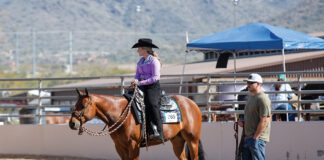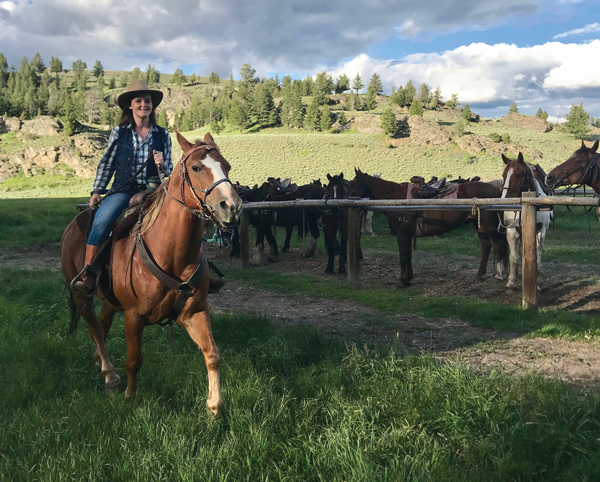
For many young riders, having a summer job that involves working with horses
every day seems like an impossible dream. However, Blaise Yafcak and Kala Bertolino did just that! They spent the summer as wranglers at Roosevelt Corral in Yellowstone National Park throwing hay, guiding trail rides and hosting guests at a nightly outdoor chuck wagon dinner. It’s exhausting work, but being a wrangler is a great job for anyone who wants an unforgettable summer with horses.
 Yellowstone is a huge national park in the northwest corner of Wyoming, and it
Yellowstone is a huge national park in the northwest corner of Wyoming, and ithosts over 4 million visitors a year. Several thousand of those visitors want to see Yellowstone on horseback, even if they’ve never ridden before, so the need for seasonal workers with horse experience is high.
Wrangler jobs at Yellowstone’s Roosevelt Corral work 12 to 14 hours a day, five days a week.
“Safety is the most important thing,” says Blaise. “There are all ages and all levels of riders here, including those that have never ridden. Plus, we run into all kinds of animals: coyotes, bison, snakes. You have to be ready for the horses to be spooked. That’s why we check the cinch tightness so much.”
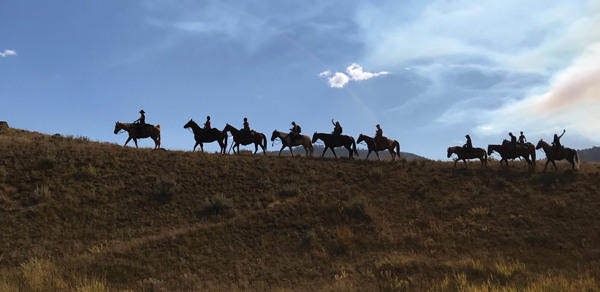
Experience Counts
Roosevelt Corral’s head wrangler, Bailee Morrison-Fogel, says her employees have a variety of horse experiences in their backgrounds.
“We’ve had western riders, English riders, dressage, polo, and everything else you can think of,” she says. “We’re looking for people with horse experience
but also an interest in hospitality.”
Blaise and Kala are examples of that diversity of backgrounds. Blaise grew up in New York City and took English riding lessons as a child. When she went to college in Colorado, she fell in love with the West and took a job on a guest ranch.
It was there that she switched to western riding and gained knowledge in all areas of horsemanship and customer service.
Kala, on the other hand, grew up riding on her family’s land in Montana. When she arrived at Yellowstone, she had just graduated from high school and was the youngest of the wranglers.
“I don’t think a lot of people knew how old I was,” says Kala. “They just respect your knowledge and experience.”
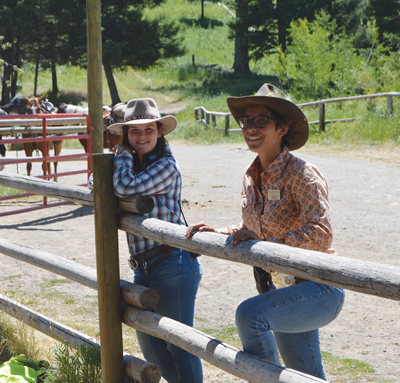
Out on the trail with a group of visitors, Kala and Blaise ride at the head and the rear of the group, communicating with each other on walkie talkies.
If the group has to cross a road, the lead will put on a bright yellow vest and go out into the road to stop traffic, staying there until the entire group has crossed. Often the guide at the front will slow the group down if there is a hazard up ahead.
“I’m stopping here for a minute,” Blaise will say to Kala on the walkie talkie. “There’s a snake crossing the trail.” One of the best parts of the job, though, is seeing the love of horses blossom in new riders. “On a recent ride there was a little girl who was shy and afraid at the beginning,” says Kala. “By the end of the ride, she had learned to control her horse, and you could see her confidence in herself growing. It made me feel great.”
Daily Life in the Job of Wrangler
The wranglers at Roosevelt Corral live in rustic cabins with their fellow workers and eat their meals at the employee dining room. The cost of this—about
$100/week—is deducted from their paychecks. They get overtime for hours over 40 each week, and often the guides get tips when they lead rides.
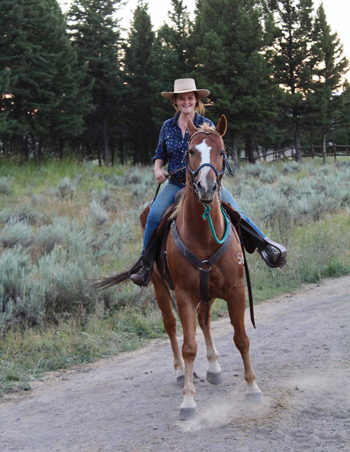
Since there’s not much to spend money on when you are so far from urban areas or shopping, the wranglers finish the summer with a substantial amount saved compared to other summer jobs.
On their off days, the wranglers can hike the miles of trails in the backcountry
or visit the geysers and geologic formations that make Yellowstone unique.
However, most wranglers prefer to take a horse and ride.
“As long as they go with someone else and have the horse back to the corral by sundown, the wranglers can pack a lunch and ride deep into the backcountry, seeing parts of the park that most people never get to see,” says Bailee.
While this is Kala’s first summer as a wrangler, it’s Blaise’s third time as
part of the majority female staff that runs Roosevelt Corral. “If you’re willing to do the job and do it well, they will give you more responsibility,” says Blaise.
This might include learning to drive a wagon team or assisting the veterinarians in horse care. Animal care is familiar territory for Blaise—she spends her winters in Manhattan working as a vet tech in an emergency animal hospital. “I love the city, but by the end of the winter I am ready to go back out West.”
This article on getting a summer job as a wrangler originally appeared in the July/August 2019 issue of Young Rider magazine. Click here to subscribe!
Enjoy the video below of the Roosevelt Corral crew.




